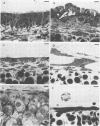Abstract
Hamster tracheal organ culture was employed as a model for the study of the pathogenesis of human parainfluenza type 3 virus infection. It clearly supported replication of the virus over a 2-week period of time. Infected tracheal explants were examined with light, electron, and immunofluorescence microscopy. They exhibited specific cytopathologic alterations including nuclear swelling and chromatin margination, multinucleated syncytia and binucleated epithelial cells, and fibroblasts and chondrocytes. Focal destruction and denudation of the respiratory epithelium occurred in later stages of infection. Virus was detected in close association with cilia and was observed budding off the unit membrane of epithelial cells.
Full text
PDF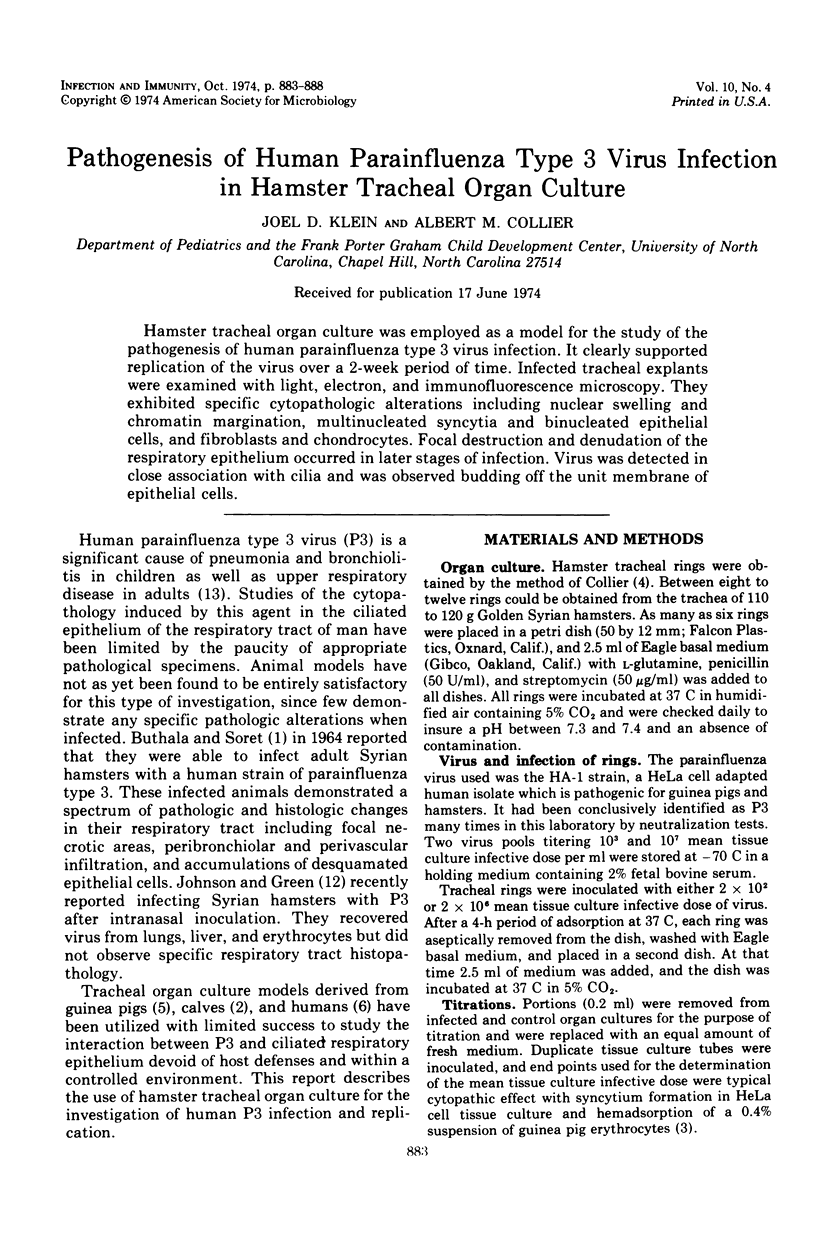
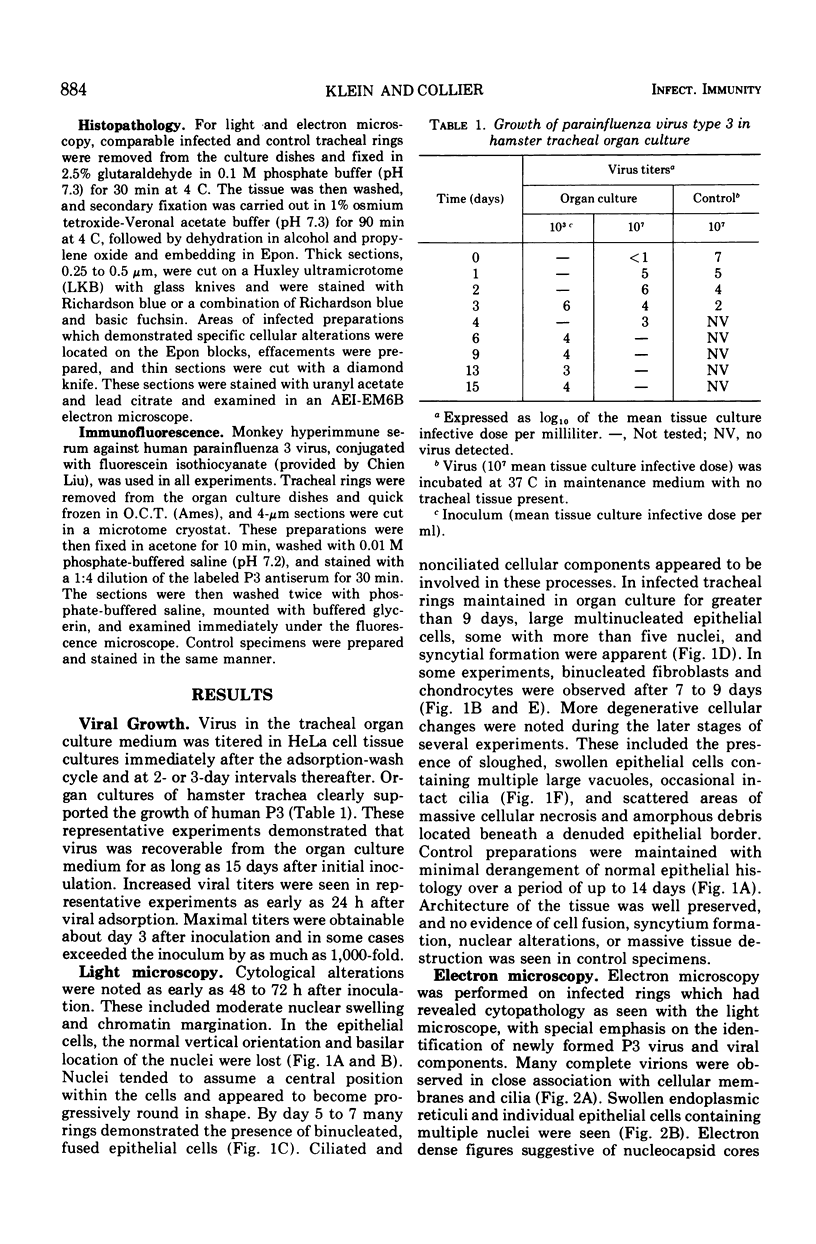
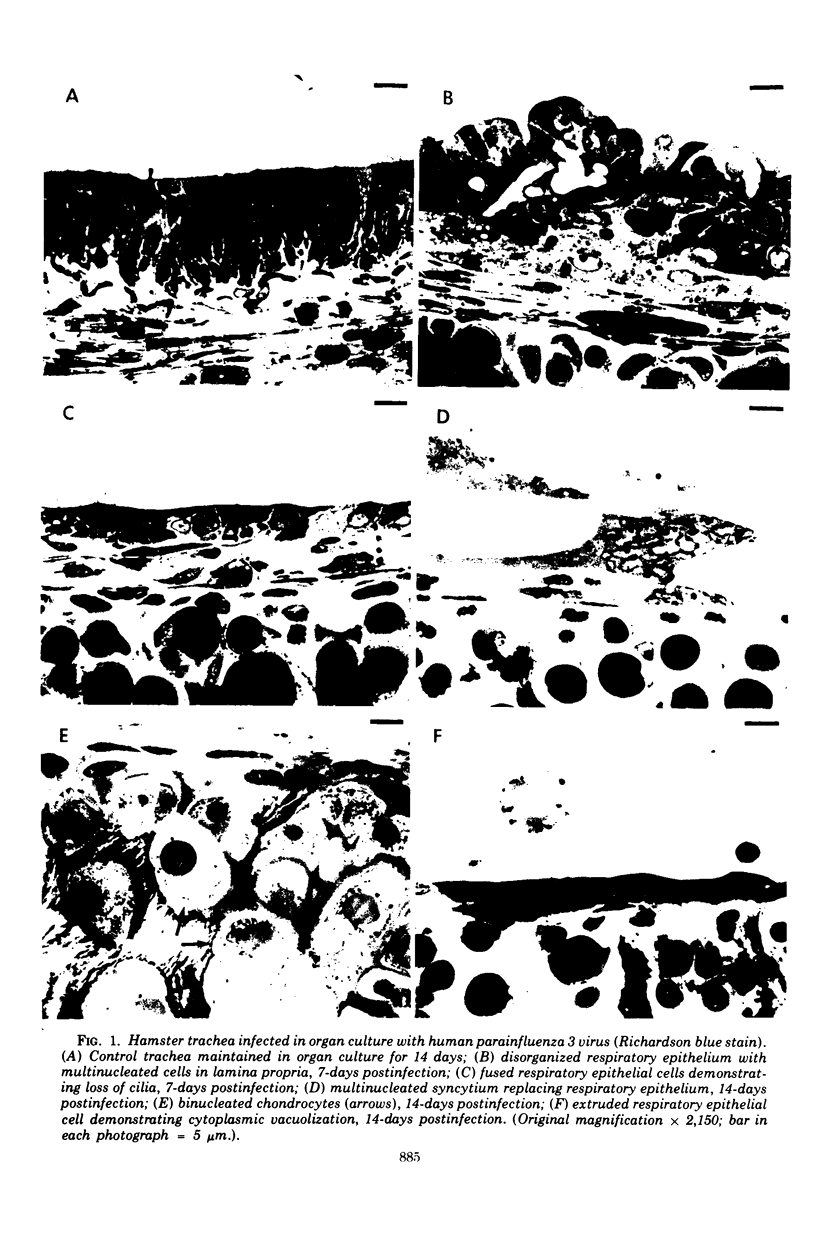
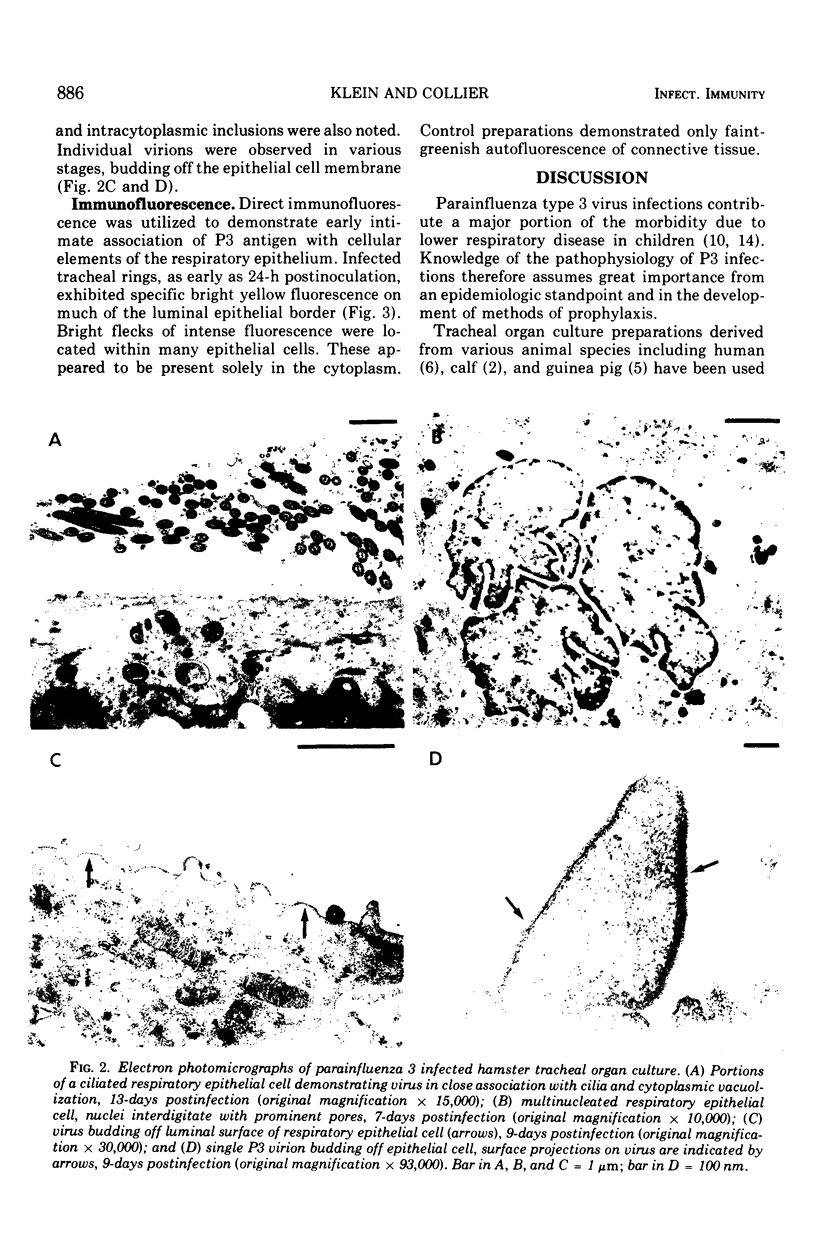
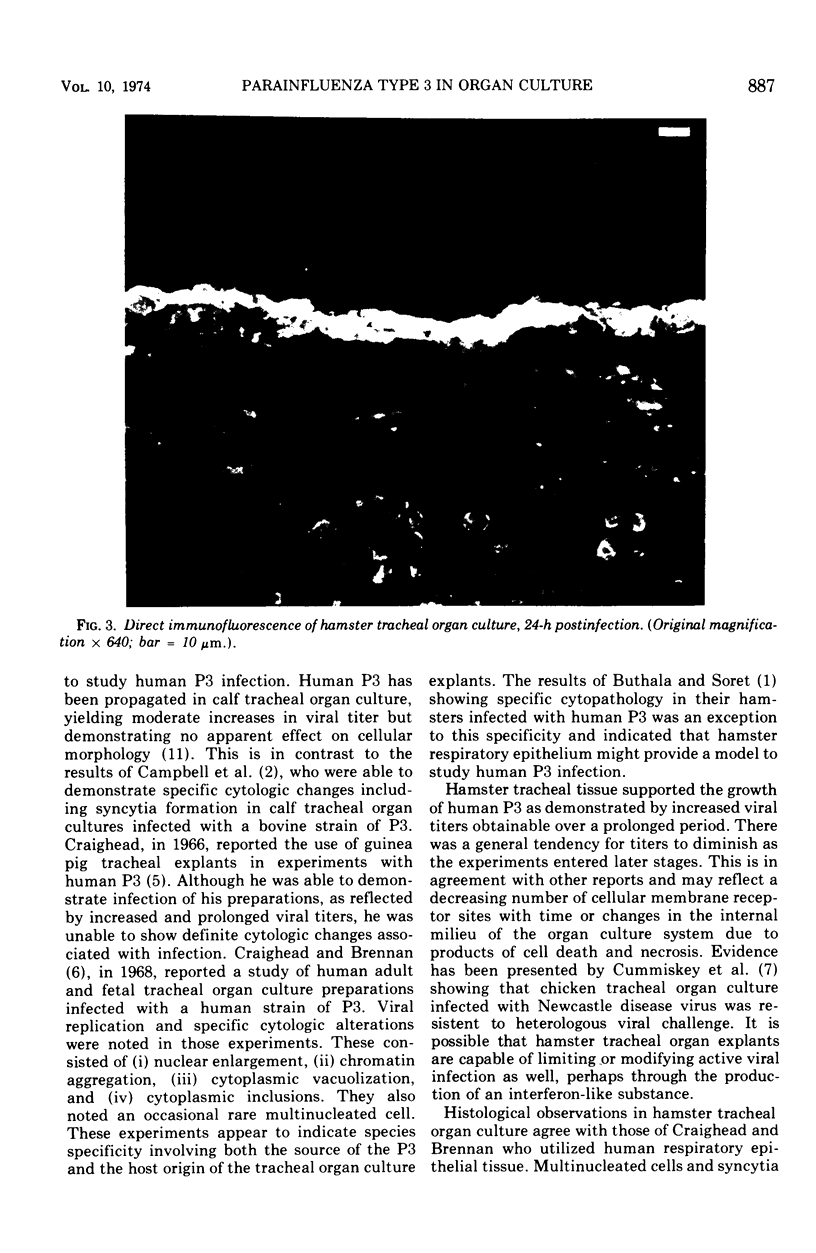
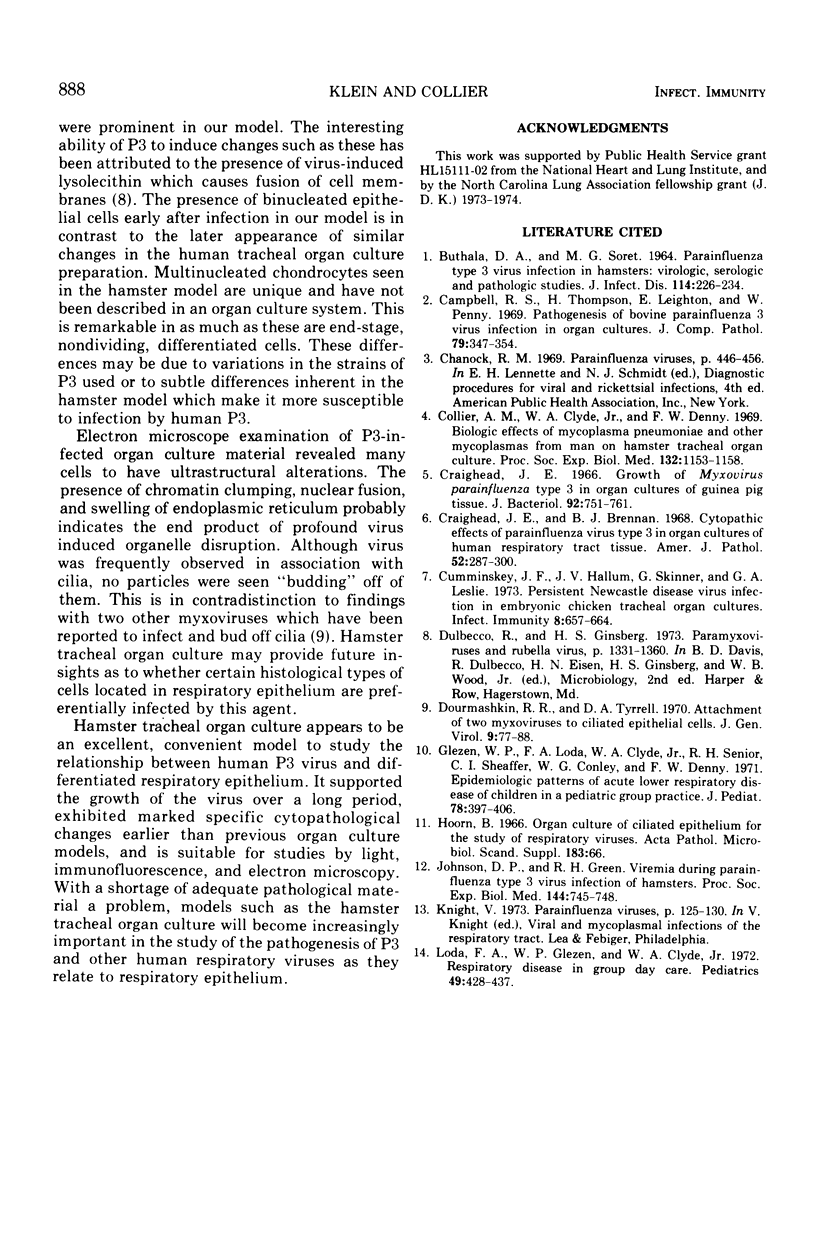
Images in this article
Selected References
These references are in PubMed. This may not be the complete list of references from this article.
- BUTHALA D. A., SORET M. G. PARAINFLUENZA TYPE 3 VIRUS INFECTION IN HAMSTERS: VIROLOGIC, SEROLOGIC, AND PATHOLOGIC STUDIES. J Infect Dis. 1964 Jun;114:226–234. doi: 10.1093/infdis/114.3.226. [DOI] [PubMed] [Google Scholar]
- Campbell R. S., Thompson H., Leighton E., Penny W. Pathogenesis of bovine parainfluenza 3 virus infection in organ cultures. J Comp Pathol. 1969 Jul;79(3):347–354. doi: 10.1016/0021-9975(69)90049-8. [DOI] [PubMed] [Google Scholar]
- Collier A. M., Clyde W. A., Jr, Denny F. W. Biologic effects of Mycoplasma pneumoniae and other mycoplasmas from man on hamster tracheal organ culture. Proc Soc Exp Biol Med. 1969 Dec;132(3):1153–1158. doi: 10.3181/00379727-132-34385. [DOI] [PubMed] [Google Scholar]
- Craighead J. E., Brennan B. J. Cytopathic effects of parainfluenza virus Type 3 in organ cultures of human respiratory tract tissue. Am J Pathol. 1968 Feb;52(2):287–300. [PMC free article] [PubMed] [Google Scholar]
- Craighead J. E. Growth of Myxovirus parainfluenza type 3 in organ cultures of guinea pig tissue. J Bacteriol. 1966 Sep;92(3):751–761. doi: 10.1128/jb.92.3.751-761.1966. [DOI] [PMC free article] [PubMed] [Google Scholar]
- Cummiskey J. F., Hallum J. V., Skinner M. S., Leslie G. A. Persistent Newcastle disease virus infection in embryonic chicken tracheal organ cultures. Infect Immun. 1973 Oct;8(4):657–664. doi: 10.1128/iai.8.4.657-664.1973. [DOI] [PMC free article] [PubMed] [Google Scholar]
- Dourmashkin R. R., Tyrrell D. A. Attachment of two myxoviruses to ciliated epithelial cells. J Gen Virol. 1970 Oct;9(1):77–88. doi: 10.1099/0022-1317-9-1-77. [DOI] [PubMed] [Google Scholar]
- Glezen W. P., Loda F. A., Clyde W. A., Jr, Senior R. J., Sheaffer C. I., Conley W. G., Denny F. W. Epidemiologic patterns of acute lower respiratory disease of children in a pediatric group practice. J Pediatr. 1971 Mar;78(3):397–406. doi: 10.1016/s0022-3476(71)80218-4. [DOI] [PubMed] [Google Scholar]
- Johnson D. P., Green R. H. Viremia during parainfluenza type 3 virus infection of hamsters. Proc Soc Exp Biol Med. 1973 Dec;144(3):745–748. doi: 10.3181/00379727-144-37673. [DOI] [PubMed] [Google Scholar]
- Loda F. A., Glezen W. P., Clyde W. A., Jr Respiratory disease in group day care. Pediatrics. 1972 Mar;49(3):428–437. [PubMed] [Google Scholar]



